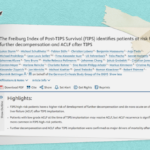
The impact of long-term toxicity management on patient quality of life is increasingly being recognized in breast cancer treatment. At the recently held 19th St. Gallen Breast Cancer Conference (SGBCC 2025), Dr. Cynthia Villarreal-Garza, Director of Clinic Oncology at the Breast Cancer Center, TecSalud,delivered a presentation titled “Ensuring Long-term Healthy Survival of Breast Cancer Patients.” She pointed out that young breast cancer patients, due to the high intensity and long duration of their treatment, face a number of unique toxicity issues that not only affect their physical health but also have a profound impact on their psychological well-being, social functioning, and overall quality of life. To monitor and intervene in these long-term toxicities, Professor Villarreal-Garza proposed the application of “evidence-based approaches for healthy living” and the use of remote monitoring applications to effectively manage toxicities and improve patient quality of life.Oncology Frontier: What impacts do long-term toxicities from breast cancer treatments have onpatients’ quality of life? Which long-term toxicities currently lack effectivemonitoring and intervention strategies?
Dr. Cynthia Villarreal-Garza: I’m Cynthia Villarreal, a breast medical oncologist in Mexico. It’s very important to understand that young breast cancer patients represent a very important set of patients. Around 7% of all breast cancer patients are very young, 40 years or under, and these patients have unique toxicities because they have very prolonged and intensive treatments. These patients can have several toxicities related to cardiovascular problems, secondary malignancies, immunotherapy-related toxicities, bone health problems, psychosocial issues, and also sexual problems. Fertility aspects are very important for these patients, as well as career and partner-related problems. We have to consider all of these factors in the survivorship era, from diagnosis through treatment.
Oncology Frontier:What ” evidence based approaches for healthy living ” have been proposed? How dothey improve patients’ quality of life?
Dr. Cynthia Villarreal-Garza: There have been several interventions that have proven to be helpful for young women experiencing symptoms and that also help improve adherence to treatment. For example, it has been proven that exercise can improve fatigue and overall wellness. Additionally, mindfulness, yoga, acupuncture, and cognitive behavioral therapy can be used to improve psychological symptoms, fear of recurrence, and overall mental health. Some medications, such as antidepressants, can also be used to treat menopausal symptoms, including hot flushes, depression, and insomnia.
The issue is that many young women do not end up receiving these interventions for various reasons—whether it’s lack of time, financial difficulties, or healthcare saturation. We must provide patients with interventions that are more accessible and easier to integrate into their daily lives, such as web-based interventions or digital symptom tracking tools that their physicians can monitor. That way, we can ensure that they receive these beneficial interventions in a more readily available way.
Oncology Frontier:When formulating treatment plans for breast cancer patients, how to balance therisks of anti-cancer efficacy and long-term toxicities? How to establish a long-termtoxicity management plan for patients from the outset?
Dr. Cynthia Villarreal-Garza : In a very practical way, if we don’t ask, we might not know. During the survivorship phase, it’s critical to track patient health outcomes and symptoms. Studies have shown that using electronic apps to monitor symptoms and needs allows for real-time interventions, helping us address issues as they arise. If we know that a patient is experiencing a problem, we can provide the necessary interventions.
The second key factor is establishing a multidisciplinary team that includes not only physicians but also psychologists, psychiatrists, exercise trainers, and rehabilitation specialists. A patient navigator who tracks patients’ needs and coordinates follow-ups can also make a significant difference. Enhancing quality of life requires interventions that are easy for patients to access. With web-based interventions and educational resources, we now have more tools available to help patients manage long-term toxicities effectively.
Oncology Frontier:Regarding the comprehensive management of long-term toxicities in breast cancerpatients, what patient management and education experiences can be shared?
Dr. Cynthia Villarreal-Garza: I think we are going to see much more development in the coming years when it comes to apps that help track symptoms and provide interventions. Data has shown that when we monitor symptoms in real time, we can reduce emergency visits, decrease the number of unnecessary consultations, improve treatment adherence, and enhance overall quality of life. We need to make these applications more widely available so that all patients can benefit from them.
It is also important to tailor these interventions—whether through apps or educational resources—to specific populations. A lot of resources exist in English, but they are not always applicable in non-English-speaking countries. For example, in Mexico, we don’t have as many resources available in Spanish. Instead of starting from scratch, we can adapt materials that have already been developed by other groups, modifying them to fit the needs of our population so they can be effectively used by our patients.


